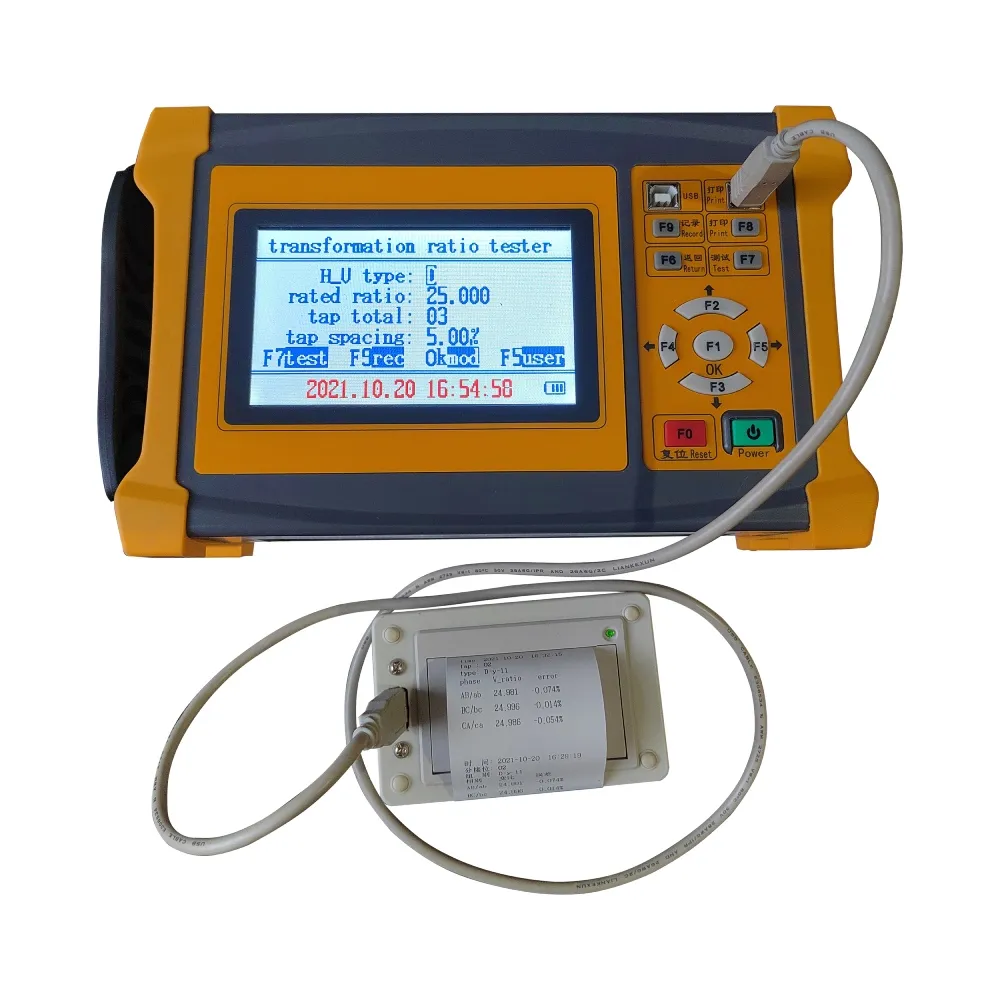 English
English


Evaluation of Dielectric Loss Through Dissipation Factor Testing Techniques
Understanding the Dielectric Dissipation Factor Test
The dielectric dissipation factor, often represented as the tangent delta (tan δ), is a key parameter in evaluating the electrical insulation properties of materials, particularly dielectrics. This factor conveys valuable insights into how much energy is lost as heat when an alternating electric field is applied to a dielectric material. Understanding and measuring the dielectric dissipation factor is essential in various industries, including electronics, power generation, and insulation production.
The dielectric dissipation factor is calculated by the ratio of the resistive component of the current (which leads to energy loss) to the capacitive component (which stores energy). A high dissipation factor indicates a greater amount of energy loss, which in turn suggests that the dielectric material is less efficient at insulating against electrical currents. Conversely, a low dissipation factor signifies that the material exhibits superior insulating properties, which is particularly desirable in applications such as capacitors, transformers, and insulators.
The process of conducting a dielectric dissipation factor test involves applying an alternating current (AC) voltage to the dielectric material and measuring the resulting voltage and current. By using specialized equipment, often referred to as a dielectric test set, technicians can accurately gauge the phase angle between the voltage and current. This phase difference is what enables the calculation of the dissipation factor, typically expressed as a percentage.
dielectric dissipation factor test

One of the key advantages of the dielectric dissipation factor test is its ability to identify potential issues in electrical insulation before they lead to catastrophic failures. For instance, increases in the dissipation factor over time can be indicative of degradation due to moisture ingress, thermal stress, or other environmental factors. Regular testing allows technicians to monitor the health of electrical systems and to take preventive measures before significant problems arise.
Moreover, different materials exhibit varying dissipation factors, and knowing the acceptable levels for specific applications ensures that engineers can make informed decisions about material selection. This is especially critical in high-voltage applications where the reliability of insulation plays a crucial role in system performance and safety.
In conclusion, the dielectric dissipation factor test is an essential tool in assessing the integrity and performance of dielectric materials. By quantifying energy loss in electrical insulation, it provides invaluable data for maintenance, quality control, and design processes across various sectors. Understanding and applying this test can ultimately lead to safer, more efficient electrical systems, thereby enhancing reliability and performance in critical applications.
-
Differences between open cup flash point tester and closed cup flash point testerNewsOct.31,2024
-
The Reliable Load Tap ChangerNewsOct.23,2024
-
The Essential Guide to Hipot TestersNewsOct.23,2024
-
The Digital Insulation TesterNewsOct.23,2024
-
The Best Earth Loop Impedance Tester for SaleNewsOct.23,2024
-
Tan Delta Tester--The Essential Tool for Electrical Insulation TestingNewsOct.23,2024





